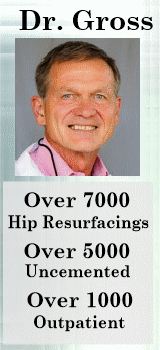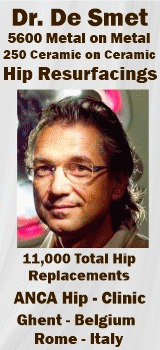Hi alay111. Here is my report on clunking.
I had the posterior approach about 7 years ago, and have experienced three distinctly different sensations, any of which I think people sometimes refer to as clunking.
The first couple of weeks after surgery, there was often a very distinct deep clunk, which I am quite sure was the two metal surfaces separating slightly and then recontacting. This was attributed by my surgeon to the soft tissue not being strong or toned enough to keep the surfaces in constant contact. This was mostly in the first week or two, and went away after the first couple of months.
The second is a subtle slipping of the two surfaces against each other. In this case the two surfaces remain in solid contact, but because the prostheses have a "polar" contact as opposed to a surrounding connection, that polar contact point will sometimes slip a fraction of a millimeter which is like an extremely subtle clunking. This still happens rarely, and is not at all a problem.
The third sensation is not what I think of as a clunk, but I know some people call it that. This is when I feel soft tissue bands (tendons or muscles) sliding or snapping across each other, or other structures. This is something that I continue to experience on a regular basis when doing deep lunges or deep squats, and is definitely uncomfortable. Since this sensation does not have a metallic connection involved, I don't think of it as a clunk, but it is the one "shifting" sensation that has not changed with time.
In my mind, this third one is definitely related to the posterior approach, since the soft tissue where I feel the shifting is definitely in the surgical plane deep under the external scar.
It will be interesting to see if you can get any of the top resurfacing surgeons involved in a discussion about the anterior approach. Up until now, they seem reluctant to discuss it. They know that cup placement is critical, and are reluctant to change to an approach that they do not feel gives them as much confidence with that cup placement.
Good for you for trying to get the conversation going. Hope it leads somewhere.











